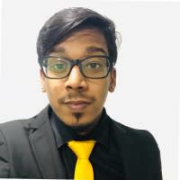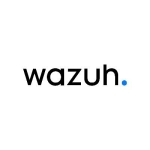What is our primary use case?
I review the data logs from each SentinelOne agent using Skylight to develop queries. We have been using Star Alerts to create custom alerts based on those rules. We also partner with their Vigilance team for 24/7 monitoring.
We implemented SentinelOne Singularity Complete to gain widespread visibility into global markets and to facilitate easy agent deployment for EDR and XDR solutions.
How has it helped my organization?
SentinelOne Singularity Complete's interoperability with other SentinelOne and third-party applications is excellent. We recently used a proof of value to integrate some of our other email products, such as Proofpoint, with SentinelOne Singularity Complete. The ease of use has been amazing. Singularity Complete has been a great data ingestion platform, and we have already gained a wealth of data that we never had access to before.
Singularity Complete's ability to ingest and correlate data across our security solutions has been effective. We can see a significant number of events from our DNS logs, firewall logs, and email tenancy. Overall, it has performed very well thus far.
We ended up getting rid of QRadar and relied heavily on Singularity Complete. Singularity Complete allowed us to deploy the SentinelOne agent on a significant number of domain controllers and collect much more information than we could with QRadar alone. We needed to purchase additional licenses to quantify the data more effectively. However, Singularity Complete provided the same if not even more enrichment because it allowed us to see a lot of things about the transitioning of IP ranges, the ingressing of traffic from different IP ranges if they are open to the internet, and who is contacting those ranges via different endpoints. Overall, Singularity Complete has provided a significant improvement in data ingestion over our previous solution of QRadar.
Overall, we have seen a quicker response time with Singularity Complete. We are able to drill down into events in a much more granular way. This allows us to respond better, correlate the information that Singularity has gathered, and come up with a definitive answer to certain questions. Because of Singularity's enrichment of the data that we currently have, we are able to answer these questions more accurately, carefully, and with more specific timestamps. Since we have some of these deployed globally, it is very important for us to get the centralized time zones correct so that we know exactly when an event occurred.
Singularity Complete has helped us reduce the number of false positives. It provides us with a wealth of data enrichment, which allows us to distinguish between normal and abnormal events in our environment. This is important because we have billions of events happening every ten minutes across our many deployed endpoints. In the past, we would waste analyst time investigating alerts that turned out to be false positives. However, with Singularity Complete, we can now quickly identify which alerts are most likely to be legitimate and prioritize those for investigation. For example, if Singularity Complete tells us that a particular event has been seen a thousand times on one endpoint but only twenty times on another endpoint, we know that the twenty occurrences on the second endpoint are more likely to be abnormal and worth investigating.
Singularity Complete has helped free up our staff's time for other projects. With all the data enrichment that Singularity Complete has provided us, we are no longer chasing false positives. We are able to set our custom Star rules so that we receive the alerts that are most relevant to our organization, rather than broad alerts that may or may not be relevant. This allows us to focus our attention on what matters most and to investigate more accurate alerts. As a result, we are able to dedicate time to other projects. Before Singularity Complete, our analysts spend two to four weeks. With Singularity Complete in place, we've seen a reduction of two to three weeks, depending on the vendor. On average, analysts now spend three to ten days analyzing logs.
Singularity Complete substantially reduced our MTTD.
Our MTTR has been substantially reduced by Singularity Complete. We are now able to respond within the hour of receiving the alert.
Singularity Complete has helped our organization save costs by eliminating the need to replace equipment infested with malware. We can now detect, remediate, and roll back malware attacks as needed, thanks to the visibility that Singularity Complete provides. We can drill down into actual alerts, not just false positives, and eradicate any malware that may be infecting our systems.
Singularity Complete has reduced our organizational risk by providing us with much broader visibility into various endpoints deployed globally. This allows us to see what is normal in our environment, rather than reacting to what may not be normal.
What is most valuable?
The most valuable aspects of SentinelOne Singularity Complete are the ease of deployment with the Sentinel Agent and the enhanced visibility with Skylight, which provides correlation of logs and all endpoint data in a centralized location.
What needs improvement?
The ingestion and correlation of data would be improved by integrating with email security solutions such as Proofpoint or our email security solution. We do not yet have a marketplace integration, so we had to build it from scratch. As a result, it has been somewhat difficult for this particular use case, but the data is available and we are able to correlate it with users, not necessarily with endpoints, but we are making progress.
We often experience interruptions to our investigations in SentinelOne Singularity Complete. It would be helpful if we could resume our search query from where we left off, even if we lose internet connectivity or the platform is caching results. This would reduce our MTTR by eliminating the need to wait for the platform to load results again. We expect some load times due to the amount of data in our environment, but the current load times are too long and sometimes produce no results. We would like to see the overall response time of the platform improved.
One area for improvement would be per-user dashboarding. This may be a permissions issue, but we currently only have organization-wide dashboards. I think per-user dashboards would be beneficial because they would allow users to focus on their specific investigations. For example, when a user opens Singularity Complete, they can see a dashboard that is tailored to their current investigation.
For how long have I used the solution?
I have been using SentinelOne Singularity Complete for three years.
What do I think about the stability of the solution?
I would rate the stability of SentinelOne Singularity Complete as a seven out of ten. We have sometimes encountered problems where queries do not load or take an abnormally long time to load, especially when we are narrowing down the search range to a fourteen-day period, which is standard for us. We have also seen queries that run for twenty minutes or so and then log us out. Additionally, the time narrowing feature, or at least the custom time slots, where we can specify a date, such as September 18, may not work depending on how we write the query. We have had to get used to the custom syntax for the time stamps. Finally, we have sometimes seen data that does not update as often as it should.
What do I think about the scalability of the solution?
We have not experienced any problems with scalability. We are able to onboard new machines, and within a day or two, we see more data populate for those machines. So far, scaling has been very helpful for us. This is one of the reasons why we wanted to onboard with Singularity Complete, to get that visibility and to get it right away.
How are customer service and support?
Most of the technical support team members I have spoken to at the level two and level three levels of support have been very helpful and willing to share resources and documents from the help portal and knowledge base articles.
How would you rate customer service and support?
Which solution did I use previously and why did I switch?
We previously used IBM Security QRadar but it did not provide the level of data ingestion we required so we switched to SentinelOne Singularity Complete.
What was our ROI?
We have seen a return on investment from SentinelOne Singularity Complete, based on our reduced time to detect and respond to threats, as well as the overall risk reduction to the organization.
What's my experience with pricing, setup cost, and licensing?
Our organization is very satisfied with SentinelOne Singularity Complete, especially compared to other options available. It is very affordable and easy to license, and it allows us to onboard new analysts quickly, with a turnaround time of one day at most.
Which other solutions did I evaluate?
We evaluated CrowdStrike, but the way their deployment platform worked would not work for our organization.
What other advice do I have?
I would rate SentinelOne Singularity Complete eight out of ten.
We just started using Ranger this week. So far, we've done small test use cases to see what our endpoints can communicate with. Ranger has identified a significant number of machines, including printers, other endpoints, and personal machines, which gives us a better understanding of our network security.
SentinelOne Singularity Complete has come a long way. I believe it used to be called Power Query or even Data Set at one time. We're currently using the Skylight portion of Singularity Complete, which is a newer addition. Compared to where it was, Singularity Complete is now leaps and bounds ahead. It's the product we use when we need a lot of raw data and the ability to customize what we're looking for in our environment. The wealth of information that we get from every endpoint with the Singularity Complete agent installed allows us to create a large number of custom rules and alerts. This saves us a lot of time, especially for our analysts, who no longer have to respond to as many false positive alerts.
We have a maintenance process in place for our custom rules and alerting. We have a dedicated team of members who are responsible for maintaining these aspects, but overall, we have not encountered any major issues that have impacted our team. A lot of this maintenance does occur outside of office hours.
With SentinelOne Singularity Complete, experiment and use it to its fullest potential, even if a mistake is made. It is a robust platform, so causing any serious damage is unlikely. Some specific features to play around with include custom roles, alerting, fields, power queries, search queries, data retention, and customized displays for the analysts. Tailoring the platform to specific needs will help get the most out of it. Singularity Complete collects a lot of data, so make sure to parse and categorize it in the most efficient way for the organization.
Which deployment model are you using for this solution?
Public Cloud
Disclosure: PeerSpot contacted the reviewer to collect the review and to validate authenticity. The reviewer was referred by the vendor, but the review is not subject to editing or approval by the vendor.




















